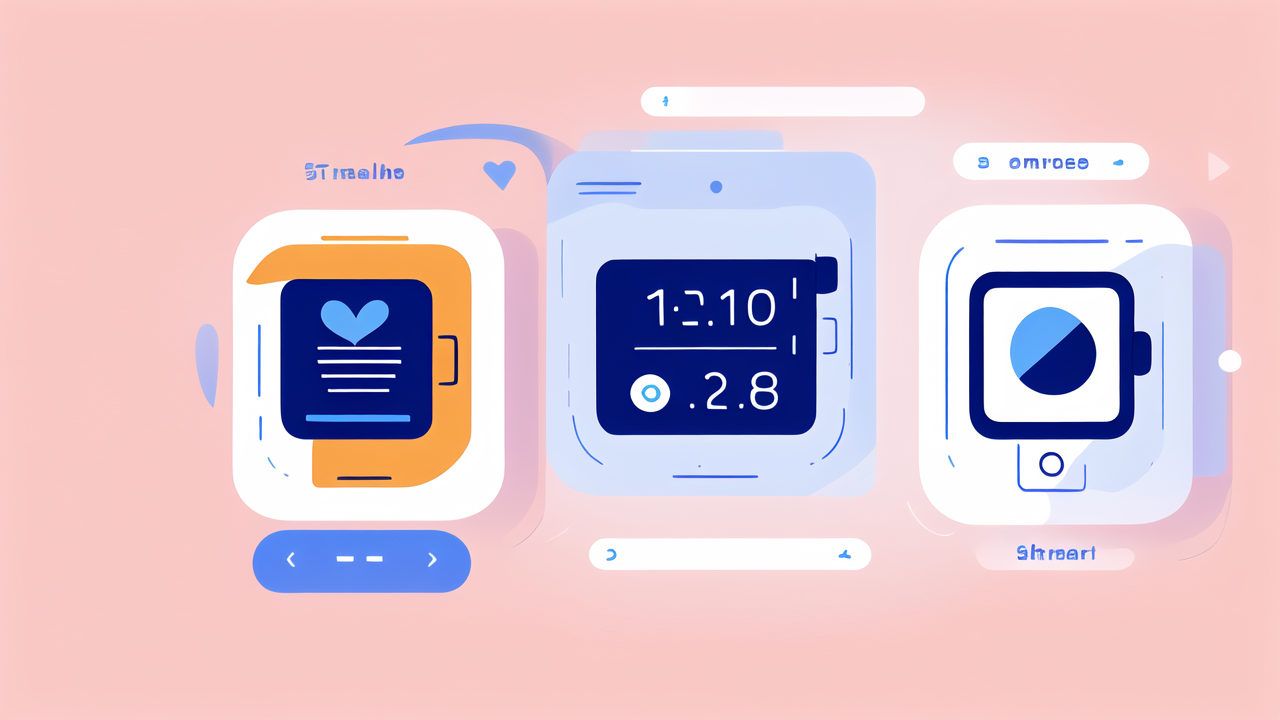The Rise of Smart Bands in the Fitness Industry
Understanding the Smart Band Revolution
Smart bands have taken the fitness world by storm. These small, wearable devices pack a punch in tracking health and fitness data. They've become popular among fitness lovers of all levels. Smart bands offer features like step counting, heart rate monitoring, and sleep tracking. They sync with smartphones to provide detailed insights into our daily activities.

The evolution of smart bands has been rapid. Early models were basic pedometers. Now, they're advanced health monitors. They can track various metrics, from calories burned to stress levels. This technology has made it easier for people to stay on top of their fitness goals. Smart bands have become more than just gadgets; they're now essential fitness tools.
How Smart Bands are Changing Fitness Regimens
Smart bands have revolutionized how we approach fitness. They provide real-time data, allowing users to make informed decisions about their workouts. This instant feedback helps in adjusting exercise intensity and duration. Many fitness enthusiasts now rely on smart bands to optimize their training routines.
These devices have also introduced gamification to fitness. Many smart bands offer challenges and rewards, making exercise more engaging. This has helped motivate people to stay active and reach their fitness goals. Smart bands have made tracking progress easier and more fun.
Moreover, smart bands have made fitness more social. Many allow users to share their achievements and compete with friends. This social aspect has created a sense of community among fitness enthusiasts. It's now common to see people comparing their daily step counts or sharing workout stats online.
Evaluating the Top Smart Bands: Features and Functions
Integrating Smart Technology into Exercise Routines
Smart bands have become integral to modern exercise routines. They offer a range of features that enhance workout experiences. Most smart bands can track various types of exercises automatically. This includes running, cycling, swimming, and even strength training.

Many smart bands now offer guided workouts. These on-screen instructions help users perform exercises correctly. Some even provide real-time coaching based on heart rate and movement data. This feature is like having a personal trainer on your wrist.
Advanced smart bands can also monitor recovery. They track metrics like heart rate variability and sleep quality. This helps users avoid overtraining and maintain a balanced fitness routine. Some smart bands even offer stress management features, promoting overall well-being.
Comparing Price Points and Specifications
Smart bands come in a wide range of prices and specifications. Budget-friendly options start around $30, while high-end models can cost over $200. The price often reflects the band's features and build quality.
Here's a comparison of typical features across price ranges:
- Budget ($30-$50): Basic step tracking, sleep monitoring, simple notifications
- Mid-range ($50-$100): Heart rate monitoring, multiple sport modes, water resistance
- High-end ($100+): GPS tracking, advanced health metrics, long battery life, premium materials
When choosing a smart band, consider your fitness needs and budget. More expensive doesn't always mean better for everyone. Some users may find all they need in a mid-range model. Others might benefit from the advanced features of high-end smart bands.
Smart Bands for Fitness Enthusiasts in the United States
Consumer Trends in Smart Band Adoption
The United States has seen a significant rise in smart band adoption. Fitness enthusiasts are increasingly turning to these devices to support their health goals. A survey showed that over 20% of Americans now own a smart band or fitness tracker.

Several factors drive this trend:
- Increasing health awareness
- Desire for data-driven fitness
- Integration with smartphones and fitness apps
- Affordable options in the market
The pandemic has also boosted smart band usage. Many people turned to home workouts and needed ways to track their fitness progress. Smart bands filled this need perfectly, offering a way to monitor health metrics without gym equipment.
The Future of Fitness: What's Next for Smart Bands?
The future of smart bands looks promising. We can expect to see even more advanced features in the coming years. Some potential developments include:
- More accurate health monitoring
- Longer battery life
- Integration with virtual reality for immersive workout experiences
- Advanced AI for personalized fitness recommendations
Smart bands may also play a bigger role in preventive healthcare. They could help detect early signs of health issues, prompting users to seek medical advice. This could revolutionize how we approach personal health management.
As technology advances, smart bands will likely become even more integrated into our daily lives. They may evolve beyond fitness tracking to become comprehensive health management tools. The line between smart bands and smartwatches may also blur, offering more features in compact designs.
In conclusion, smart bands have become essential tools for fitness enthusiasts. They offer valuable insights, motivation, and guidance for healthier lifestyles. As technology continues to evolve, smart bands will play an even bigger role in shaping the future of fitness and health management.




Leave a comment
This site is protected by hCaptcha and the hCaptcha Privacy Policy and Terms of Service apply.